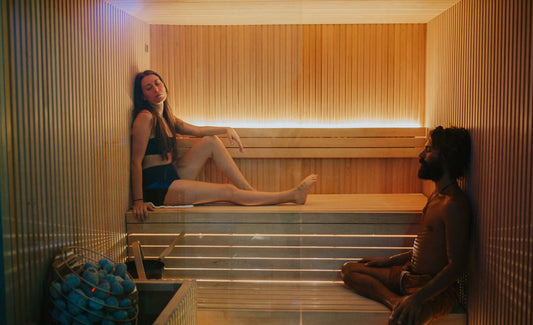
Dresses have long been associated with femininity, and their role in gender expression is both complex and multifaceted. The perception of dresses as inherently feminine is shaped by a confluence of cultural, historical, and social factors that have evolved over centuries. In this article, we will explore the reasons behind the association of dresses with femininity, examining historical context, cultural influences, and contemporary perspectives. By understanding these aspects, we can gain insight into how and why dresses have come to be seen as a symbol of femininity and what this means in today’s society.
Historical Context
1.1. Ancient Attire and Gender Norms
The historical association of dresses with femininity can be traced back to ancient civilizations. In many cultures, garments such as tunics, robes, and draped fabrics were worn by both men and women. For instance, ancient Greeks and Romans wore flowing garments like the chiton and toga, which were not gender-specific but were later adapted into distinct female and male attire as fashion evolved.
Over time, as societies developed more complex gender norms and dress codes, the distinction between masculine and feminine attire became more pronounced. By the Middle Ages, European dress began to show clear gender differences, with dresses becoming more associated with women’s fashion. This trend continued into the Renaissance, where elaborate gowns and corsets became symbolic of feminine elegance and status.
1.2. The Influence of Victorian Fashion
The 19th century brought about significant changes in women’s fashion, particularly during the Victorian era. The introduction of the hourglass silhouette, achieved through corsets and voluminous skirts, reinforced the association of dresses with femininity. Women’s dresses were designed to emphasize a narrow waist and full hips, reinforcing gendered ideals of beauty and propriety.
Victorian fashion set the stage for the early 20th century, where the ideal feminine figure continued to be associated with the dress. Despite changes in styles and silhouettes, dresses remained central to women’s wardrobes, solidifying their association with femininity.
Cultural Influences
2.1. Symbolism and Tradition
Cultural traditions and symbolism play a significant role in defining why dresses are seen as feminine. In many cultures, dresses are worn during significant life events such as weddings, religious ceremonies, and cultural festivals. For example, the white wedding dress is a symbol of purity and tradition in many Western cultures, while elaborate dresses are integral to celebrations such as quinceañeras in Latin American cultures.
These traditions reinforce the association of dresses with femininity by linking them to important rites of passage and cultural practices. Dresses often carry symbolic meanings that align with societal expectations of femininity and womanhood.
2.2. Media and Popular Culture
The media and popular culture have a profound impact on the perception of dresses as feminine. Films, television, and advertising frequently portray dresses as a symbol of beauty, elegance, and femininity. Iconic figures such as Marilyn Monroe and Audrey Hepburn have cemented the image of the dress as a hallmark of femininity through their on-screen personas and fashion choices.
Fashion designers and brands also contribute to this perception by creating and marketing dresses as the epitome of feminine fashion. The portrayal of dresses in media and advertising reinforces societal norms and expectations around gender and clothing.

Social Factors
3.1. Gender Identity and Expression
The association of dresses with femininity is closely linked to gender identity and expression. For many, wearing a dress is a way to express their gender identity and conform to societal expectations. Dresses are often seen as a way for individuals to embody traditional notions of femininity and align with cultural ideals of beauty and grace.
However, it’s important to note that the association of dresses with femininity is not universal. In contemporary society, there is a growing recognition of diverse gender identities and expressions. Many individuals challenge traditional gender norms by choosing to wear dresses regardless of their gender identity, reflecting a shift towards more fluid and inclusive understandings of gender.
3.2. Changing Fashion Trends
Fashion trends and societal attitudes towards gender and clothing are continuously evolving. In recent years, there has been a movement towards breaking down traditional gender barriers in fashion. Designers and brands are increasingly offering gender-neutral or unisex clothing, including dresses, which challenges the conventional association of dresses with femininity.
This shift is reflective of broader changes in societal attitudes towards gender and fashion. As norms continue to evolve, the perception of dresses as exclusively feminine may change, leading to a more inclusive and diverse understanding of fashion and gender expression.
Practical Considerations
4.1. Design and Functionality
The design and functionality of dresses contribute to their association with femininity. Traditionally, dresses are designed to highlight certain aspects of the female form, such as the waistline and neckline. The use of soft, flowing fabrics and intricate detailing further emphasizes a feminine aesthetic.
In contrast, men’s clothing historically prioritized functionality and practicality, with designs that focused on ease of movement and durability. This distinction in design philosophy has reinforced the association of dresses with femininity, as they are often seen as more decorative and less utilitarian compared to men’s clothing.
4.2. Cultural Norms and Dress Codes
Cultural norms and dress codes also play a role in defining why dresses are considered feminine. In many societies, formal and social events have established dress codes that dictate the wearing of dresses for women and girls. These codes reinforce the association of dresses with femininity by setting standards for appropriate attire based on gender.
Adherence to these dress codes can be seen as a way to conform to societal expectations and maintain cultural traditions. As dress codes evolve and become more flexible, the association of dresses with femininity may also change, reflecting broader shifts in societal norms and values.
The Future of Dresses and Femininity
5.1. Innovations and Trends
The fashion industry is continuously evolving, with innovations in materials, design, and production shaping the future of dresses. Advances in technology and sustainability are leading to the creation of new and diverse styles that challenge traditional notions of femininity.
Designers are exploring new ways to incorporate gender-neutral elements into dress design, creating garments that defy conventional gender norms. This evolution reflects a growing recognition of the diversity of gender expressions and a move towards more inclusive and flexible fashion.
5.2. Education and Awareness
Education and awareness about gender and fashion are crucial in understanding the evolving role of dresses in society. As discussions around gender identity and expression become more prevalent, there is an increased focus on educating individuals about the historical and cultural contexts of fashion.
This education helps in challenging traditional stereotypes and promoting a more inclusive understanding of fashion. By fostering greater awareness and open dialogue, we can support the development of fashion that reflects diverse identities and expressions.
Conclusion
The association of dresses with femininity is rooted in a complex interplay of historical, cultural, and social factors. From ancient attire to contemporary fashion, dresses have been closely linked with gender norms and expectations. While traditional notions of femininity continue to influence the perception of dresses, evolving attitudes towards gender and fashion are challenging and redefining these associations.
Understanding the historical context, cultural influences, and social factors that shape the perception of dresses helps in appreciating their significance and exploring their future potential. As society continues to evolve, the role of dresses in expressing gender and identity will likely continue to change, reflecting broader shifts in fashion and cultural norms.


